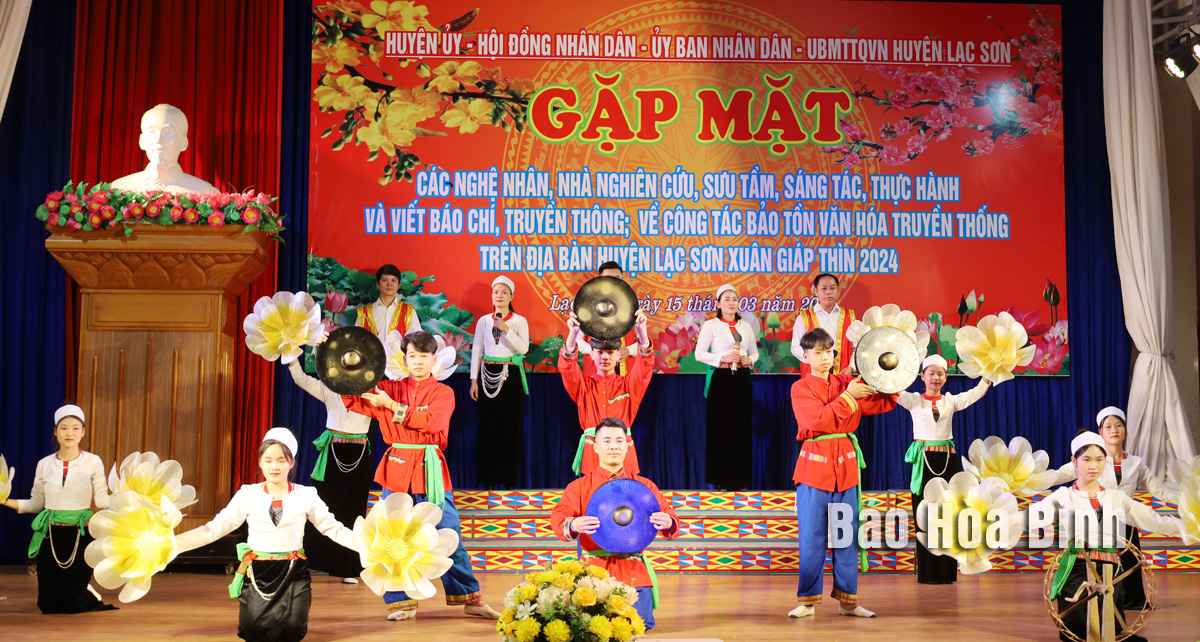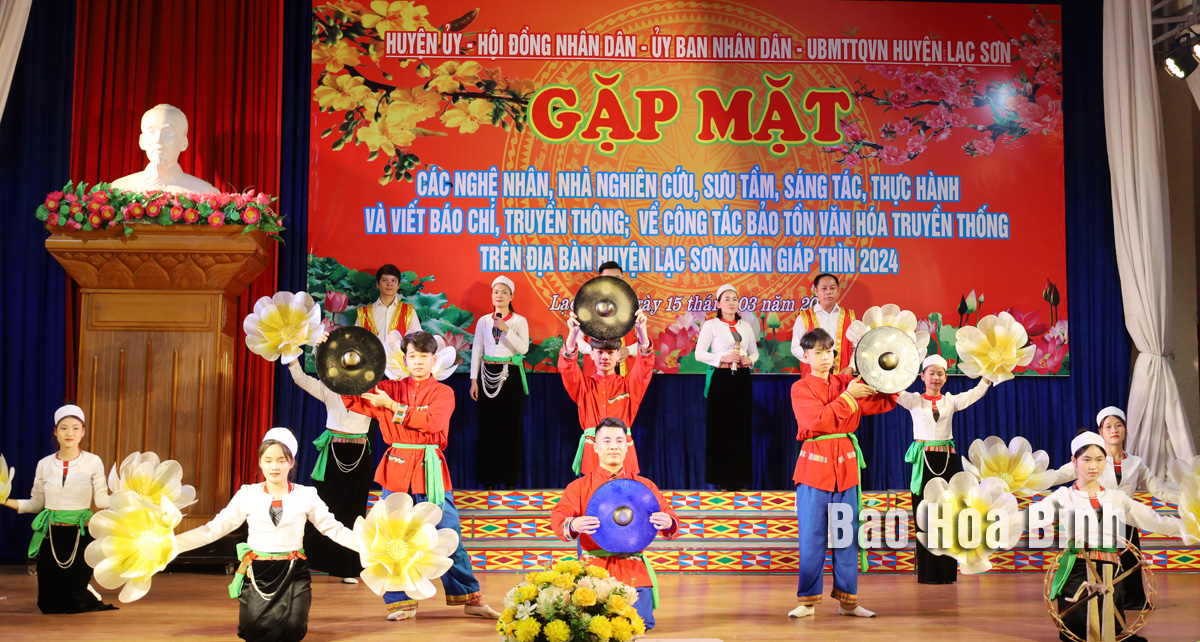
Through ups and downs, many unique cultural features of the Muong ethnic minority group are facing risks of falling into oblivion. However, with a strong determination, Lac Son district of Hoa Binh province has deployed synchronous solutions to preserve and promote the locality's cultural heritage values.
An art programme to honour and spread the Muong ethnic minority group’s cultural values
Recently, the district has issued nine resolutions, including Resolution No. 08-NQ/HU dated December 20, 2021 on preserving and promoting the Muong ethnic minority group's cultural identity.
Currently, the district has 196 relic sites, including three national and 13 provincial-level sites. The relic sites have been restored to meet the spiritual and cultural demands of people, contributing to the locality’s socio-economic development.
In 2023, the district submitted a dossier to the provincial People's Committee and the Ministry of Culture, Sports and Tourism for recognition of Trai cave in Tan Lap commune and stone roof of Vanh village in Yen Phu commune as special national relic sites.
The mobilisation of resources for the protection and promotion of relic values from the state budget, revenues from relics' activities and social sources have been stepped up. The activities of collecting, inventorying, preserving and displaying artifacts have made positive changes.
Bui Van Duong, Vice Chairman of the Lac Son district People's Committee, said that currently, there are nine traditional folk festivals in the area that have been restored and maintained to attract tourists. Since 2020, the district has proposed all levels submit 15 applications to the State Council. The State President conferred titles on eight artisans, including seven meritorious artisans and one people's artisan.
In the period of 2019 - 2023, the district People's committee directed relevant agencies to open more than 10 cultural heritage teaching classes on Muong gong, mo Muong, and brocade weaving, helping to preserve and promote cultural heritage values of the local Muong ethnic people in the locality.
With an increasingly vibrant and widespread emulation movement aimed at building cultured residential areas and cultured families, Yen Thuy District has been making steady progress toward improving both the material and spiritual well-being of its people, while fostering a civilized, prosperous, beautiful, and progressive community.
Once lacking recreational spaces and community facilities, Residential Group 2 in Quynh Lam Ward (Hoa Binh City) has recently received attention for the construction of a new, spacious, and fully equipped cultural house. The project followed the model of state support combined with public contributions in both labor and funding.
The "All people unite to build cultural life" movement, which has been effectively integrated with Kim Boi district’s socio-economic development goals, is fostering a lively spirit of emulation across local residential areas, hamlets, villages, public agencies, and enterprises. In addition, through the initiative, traditional cultural values are being preserved and promoted, while community solidarity and mutual support in poverty reduction and economic development are being strengthened.
A working delegation of the Hoa Binh provincial People’s Committee led by its Permanent Vice Chairman Nguyen Van Toan on June 11 inspected the progress of a project to build the Mo Muong Cultural Heritage Conservation Space linked to tourism services in Hop Phong commune, Cao Phong district.
Born and growing in the heroic land of Muong Dong, Dinh Thi Kieu Dung, a resident in Bo town of Kim Boi district, in her childhood was nurtured by the sweet lullabies of her grandmother and mother. These melodies deeply imprinted on her soul, becoming an inseparable part of her love for her ethnic group's culture. For over 20 years, this love for her hometown has driven Dung to research, collect, and pass down the cultural values of the Muong people to future generations.
In the final days of May, the Ethnic Art Troupe of Hoa Binh Province organized performances to serve the people in remote, mountainous, and particularly disadvantaged areas within the province. These were not just ordinary artistic shows, but they were the meaningful journeys aimed at spreading cultural values, enhancing the spiritual life of the people and contributing to the preservation of ethnic minority cultural identities.



